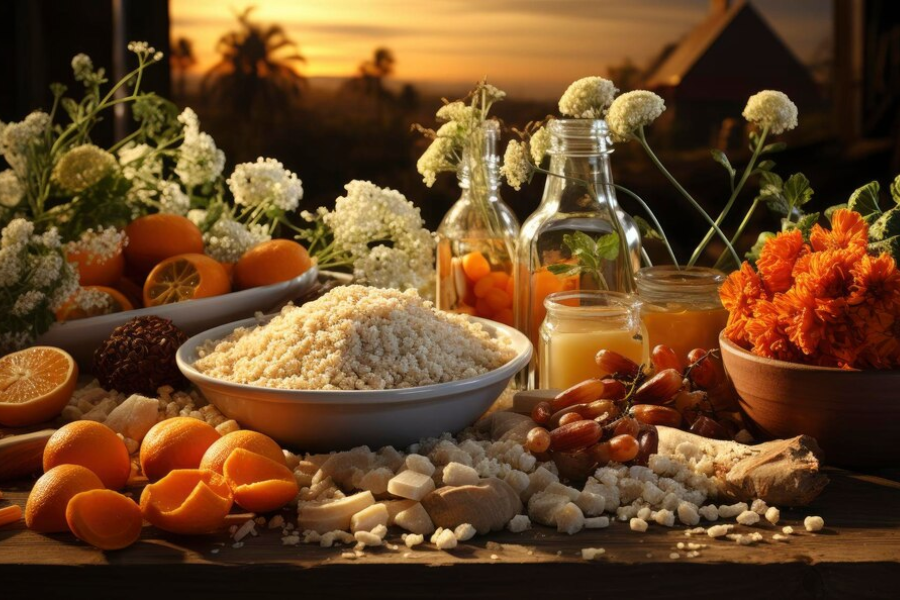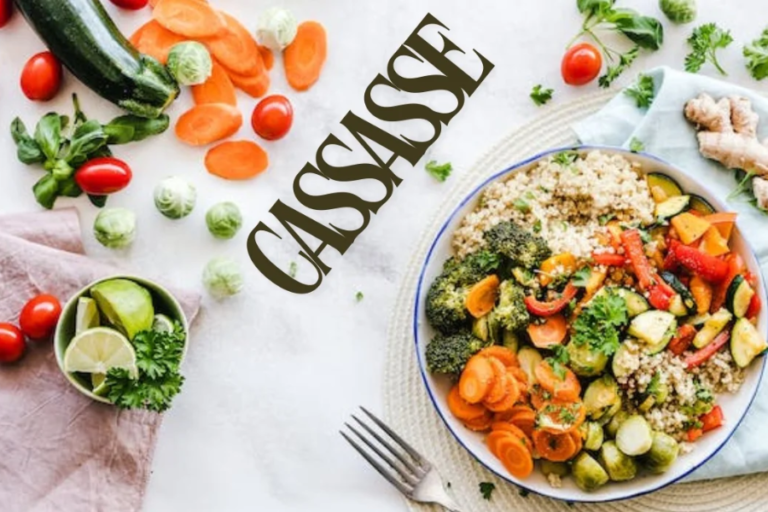Cassasse: A Timeless Caribbean Dish of Rich History, Flavorful Ingredients, and Cultural Significance
The Caribbean is renowned for its stunning beaches, vibrant culture, and delightful cuisine. Among the many dishes that capture the essence of the islands, one stands out: Cassasse. This traditional dish, rich in history and flavor, is a must-try for anyone seeking an authentic taste of the Caribbean. In this article, we will delve into the history of Cassasse, explore its diverse and tasty ingredients, and highlight where you can enjoy the best Cassasse in the Caribbean.
The History of Cassasse
Cassasse has deep roots in the Caribbean, particularly in the French-speaking islands of Martinique and Guadeloupe. The dish is believed to have originated with African slaves who brought their traditional cooking techniques and ingredients to the islands. Over time, these culinary traditions melded with local Caribbean flavors, creating the unique and beloved dish known as Cassasse. The name “Cassasse” itself is derived from the Arawak word for a kind of mahogany tree native to the Caribbean and parts of Central and South America. The tree’s wood was traditionally valued for its quality and durability, much like the dish named after it, which has stood the test of time as a staple in Caribbean cuisine.
The Ingredients of Cassasse
Cassasse is a savory, stew-like dish made with various ingredients that come together to create an explosion of flavor in every bite. The main ingredient is cassava, a starchy root vegetable that is a dietary staple in the Caribbean. Other essential components include:
Coconut Milk: Adds a creamy richness to the dish.
Onions and Garlic: Provide a flavorful base.
Herbs and Spices: Thyme, parsley, scallions, and hot peppers give Cassasse its distinctive taste.
Meat: Often includes chicken, fish, salted pig’s tail, salt beef, or cow foot.
Vegetables and Tubers: Yuca, green bananas, plantains, okra, carrots, and peppers add texture and nutrition.
The combination of these ingredients results in a harmonious blend of flavors that is both hearty and satisfying. The dish is typically served with rice and beans or bread, making it a complete meal.
Where to Find the Best Cassasse
While Cassasse is a traditional Caribbean dish, you can find great versions of it outside the islands. Here are some top places to try Cassasse:
Island Echo Caribbean Cuisine (Houston, Texas): This family-owned restaurant is renowned for its authentic Caribbean dishes, including their famous Cassasse. The flavors and atmosphere transport diners directly to the Caribbean.
D Caribbean Curry Spot Cuisine (Pearland, Texas): Specializing in Caribbean cuisine, this restaurant is known for its delicious Cassasse. The rich, flavorful stew is a favorite among locals and visitors alike.
For those fortunate enough to visit the Caribbean, sampling Cassasse in its homeland is a culinary adventure not to be missed. Each island has its own variation, adding unique twists to the traditional recipe.
How to Cook Cassasse
Making Cassasse at home can be a rewarding experience. Here is a step-by-step guide to creating this delightful dish:
Ingredients:
2 cups grated cassava
1 cup coconut milk
1 large onion, finely chopped
3 cloves garlic, minced
1 tsp thyme
2 tbsp chopped parsley
3 scallions, chopped
Salt and pepper to taste
1 lb cooked and shredded chicken or fish
Instructions:
In a large bowl, mix together the grated cassava, coconut milk, onion, garlic, thyme, parsley, scallions, salt, and pepper.
Grease a baking dish and spread half of the cassava mixture on the bottom.
Layer the cooked and shredded chicken or fish on top of the cassava mixture.
Cover the chicken or fish with the remaining cassava mixture.
Bake in the oven for 45 minutes, or until the top is golden brown.
Serve with rice and beans on the side.
This recipe captures the essence of Caribbean cuisine, bringing the flavors of the islands to your kitchen.
Cultural Significance of Cassasse
Cassasse is more than just a delicious dish; it holds cultural significance in the Caribbean. It represents a fusion of African and Caribbean culinary traditions, a testament to the resilience and creativity of the people who have made the islands their home. The dish is often enjoyed during communal gatherings and celebrations, fostering a sense of community and shared heritage.
Variations of Cassasse
Different Caribbean islands have their own versions of Cassasse, each adding unique ingredients and techniques:
Callaloo (Trinidad and Tobago): A similar dish that includes leafy greens, often cooked with crab or salted meat.
Fish Broth (Barbados): A fish-based stew that incorporates many of the same vegetables and spices as Cassasse.
Kub Kak (Virgin Islands): A variation that uses local fish and vegetables, with a distinct flavor profile.
The Benefits of Cassasse
Beyond its delightful taste, Cassasse offers several benefits:
Nutritional Value: The dish is rich in nutrients, thanks to the combination of meat, vegetables, and tubers.
Cultural Connection: Preparing and enjoying Cassasse connects people to their cultural roots and traditions.
Versatility: The dish can be adapted to include various meats and vegetables, making it suitable for different tastes and dietary preferences.
Conclusion
Cassasse is a timeless Caribbean dish that embodies the rich history, diverse flavors, and cultural significance of the islands. Whether you try it at a local Caribbean restaurant or make it at home, Cassasse offers a culinary journey that delights the senses and nourishes the soul. Its blend of cassava, coconut milk, spices, and herbs creates a symphony of flavors that is both comforting and exotic. So, next time you’re in the Caribbean or looking to experience its cuisine, be sure to savor the wonderful dish that is Cassasse.
Facts:
Origin: Cassasse is a traditional dish from the Caribbean, particularly prominent in the French-speaking islands of Martinique and Guadeloupe.
Main Ingredient: The primary ingredient in Cassasse is cassava, a starchy root vegetable.
Historical Roots: The dish is believed to have been brought to the Caribbean by African slaves, combining their traditional cooking methods with local ingredients.
Cultural Variations: Cassasse is known by different names across the Caribbean, such as Callaloo in Trinidad and Tobago, Fish Broth in Barbados, and Kub Kak in the Virgin Islands.
Accompaniments: It is typically served with rice and beans or bread, making it a complete meal.
Flavor Profile: The dish features a blend of coconut milk, onions, garlic, thyme, parsley, scallions, and a variety of spices.
Cooking Method: Cassasse is usually baked, with layers of grated cassava and meat (chicken or fish) forming the core of the dish.
Summary
Cassasse is a traditional Caribbean dish with deep historical roots and a rich flavor profile. Originating in the French-speaking islands of Martinique and Guadeloupe, it is believed to have been introduced by African slaves who blended their culinary techniques with local ingredients. The dish’s main ingredient is cassava, which is combined with coconut milk, onions, garlic, and a variety of herbs and spices to create a savory, hearty meal. Cassasse is known by different names across the Caribbean, reflecting the regional variations in its preparation. It is typically served with rice and beans or bread and is enjoyed both by locals and tourists seeking an authentic taste of the islands. The dish not only offers a delicious culinary experience but also serves as a cultural connection to the Caribbean’s rich heritage.
FAQs
1. What is Cassasse?
Cassasse is a traditional Caribbean dish made primarily from cassava and a mix of other ingredients like coconut milk, onions, garlic, herbs, and spices. It is often baked and served with meat such as chicken or fish.
2. Where did Cassasse originate?
Cassasse originated in the Caribbean, particularly in the French-speaking islands of Martinique and Guadeloupe. It was influenced by African slaves who brought their cooking techniques to the region.
3. What are the main ingredients in Cassasse?
The main ingredients in Cassasse include grated cassava, coconut milk, onions, garlic, thyme, parsley, scallions, and a variety of spices. It often includes meat such as chicken or fish.
4. How is Cassasse typically served?
Cassasse is typically served with rice and beans or bread, making it a complete and satisfying meal.
5. Are there different variations of Cassasse?
Yes, Cassasse has different names and variations across the Caribbean. For example, it is known as Callaloo in Trinidad and Tobago, Fish Broth in Barbados, and Kub Kak in the Virgin Islands.
6. Can I make Cassasse at home?
Yes, Cassasse can be made at home using readily available ingredients like cassava, coconut milk, and various herbs and spices. A common method involves baking the dish with layers of cassava and meat.
7. What is the cultural significance of Cassasse?
Cassasse is a dish that embodies the rich history and cultural heritage of the Caribbean. It reflects the fusion of African and local Caribbean culinary traditions and is often enjoyed during communal gatherings and celebrations.
8. Where can I try authentic Cassasse?
Authentic Cassasse can be tried at various Caribbean restaurants. Notable spots include Island Echo Caribbean Cuisine in Houston, Texas, and D Caribbean Curry Spot Cuisine in Pearland, Texas. For an authentic experience, visiting the Caribbean islands is recommended.
9. Is Cassasse healthy?
Cassasse is a nutritious dish, combining protein from the meat, carbohydrates from cassava, and a range of vitamins and minerals from the vegetables and herbs. It offers a balanced meal when enjoyed in moderation.
10. What does Cassasse taste like?
Cassasse has a savory, rich flavor profile, with the coconut milk adding creaminess and the herbs and spices providing depth. The combination of ingredients creates a hearty and satisfying dish that captures the essence of Caribbean cuisine.
“Stay updated with the latest in tech and geek culture at NewsJoTechGeeks.org.”






